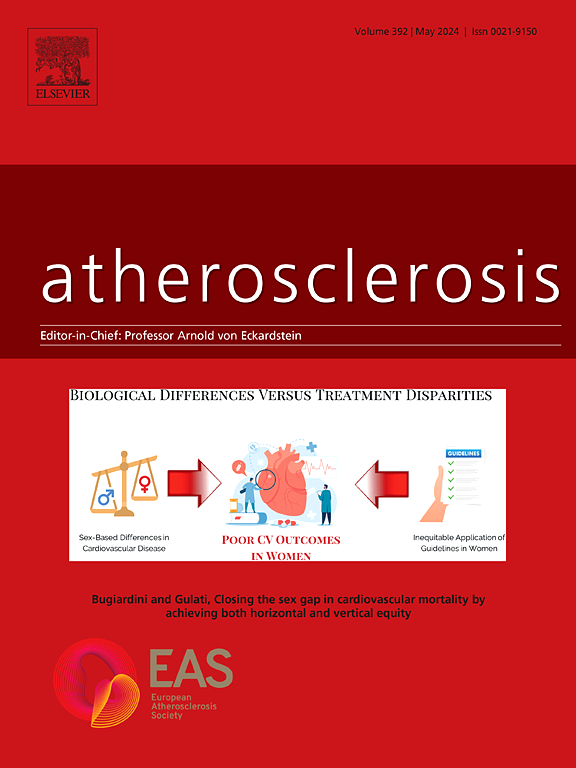Fgf23 expression increases atherosclerotic plaque burden in male ApoE deficient mice
IF 4.9
2区 医学
Q1 CARDIAC & CARDIOVASCULAR SYSTEMS
引用次数: 0
Abstract
Introduction
Components of both the innate and adaptive immune system impact on arterial walls in atherosclerosis. Fibroblast growth factor-23 (FGF23) is a phosphate regulating hormone linked to cardiovascular disease (CVD) in patients with and without chronic renal disease. However, it remains controversial whether FGF23 is merely a biomarker or contributes to CVD. Here, we overexpressed Fgf23 in ApoE−/−mice to delineate the role of FGF23 in atherogenesis.
Methods and results
10-week old ApoE−/− mice received a hydrodynamic tail vein with a plasmid encoding for Fgf23, and were sacrificed 10 weeks later. FGF23 concentrations increased more than 400-fold in the Fgf23 treated group, remaining high throughout the experiment. Mice in the Fgf23 group developed hypophosphatemia, secondary hyperparathyroidism and a moderate increase in plasma creatinine concentrations. Male ApoE−/− mice exposed to high Fgf23 developed larger atherosclerotic lesions compared to controls, in two different locations of aorta, whereas no differences in plaque burden were seen between female ApoE−/− mice and controls. Serum IL-6 concentrations were increased in the Fgf23 group, associated with a vascular inflammatory response of recruited macrophages and neutrophils, and with a shift of CD4+ T effector cells from Th1 to Th17 and migration of lymphocytes to the spleen.
Conclusion
Fgf23 overexpression increases the atherosclerotic burden in male ApoE−/− mice and alters both the innate immune system and T cell subpopulations, generating an inflammatory environment that may promote adverse clinical outcomes associated with FGF23 excess.

求助全文
约1分钟内获得全文
求助全文
来源期刊

Atherosclerosis
医学-外周血管病
CiteScore
9.80
自引率
3.80%
发文量
1269
审稿时长
36 days
期刊介绍:
Atherosclerosis has an open access mirror journal Atherosclerosis: X, sharing the same aims and scope, editorial team, submission system and rigorous peer review.
Atherosclerosis brings together, from all sources, papers concerned with investigation on atherosclerosis, its risk factors and clinical manifestations. Atherosclerosis covers basic and translational, clinical and population research approaches to arterial and vascular biology and disease, as well as their risk factors including: disturbances of lipid and lipoprotein metabolism, diabetes and hypertension, thrombosis, and inflammation. The Editors are interested in original or review papers dealing with the pathogenesis, environmental, genetic and epigenetic basis, diagnosis or treatment of atherosclerosis and related diseases as well as their risk factors.
 求助内容:
求助内容: 应助结果提醒方式:
应助结果提醒方式:


